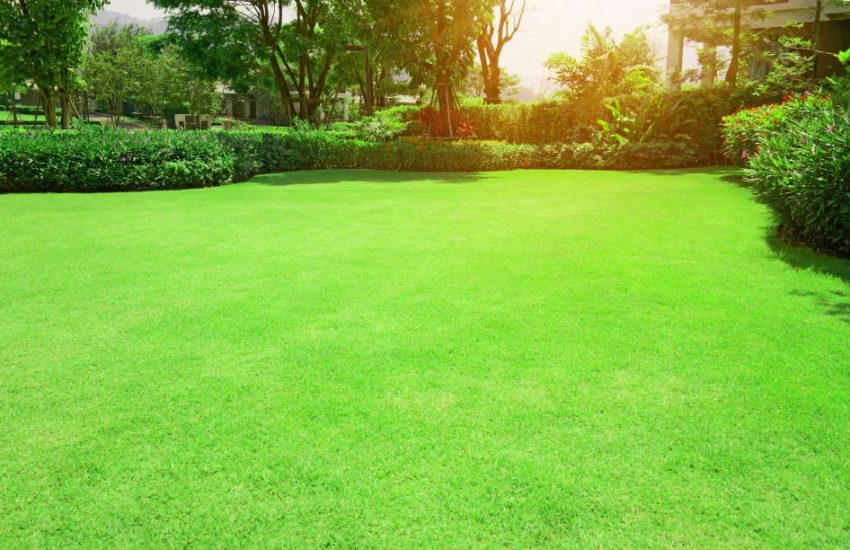The Comprehensive Guide to Lemon Trees: How to Grow and Care for Them
Among the readers of this article, there is probably no one who has never eaten a lemon before. Because this fruit is widely used worldwide, it is an indispensable part of meals and is very beneficial for health.
So, how does the process that brings this fruit to our kitchen work? How to plant a lemon tree and turn it into healthy lemon fruits? What are the types of lemon trees? Are these trees grown indoors or outdoors, or are both possible? When is the right time to prune? What fertilizers do they like, and when should they be fertilized?
We know that many people are interested in gardening, both as a hobby and professionally, and they have many questions about the lemon tree. We have prepared this article to answer all these questions and more about the lemon tree and equip a gardener to grow this plant. So, if you’re ready, let’s start.
Common Types of Lemon Tree
There are dozens of types of lemon trees that can be grown almost anywhere in the world. Of course, we do not want to waste your time discussing rare species you will never see. Instead, this section will provide information about common species you can see in the markets and grow in your garden.
1- Eureka
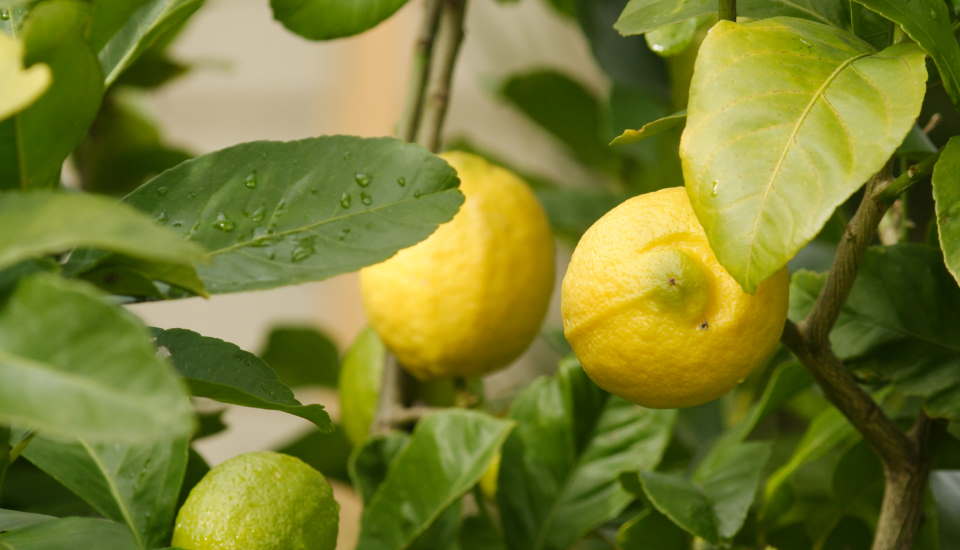
It is the most popular type of lemon tree that has grown in the US for over 150 years. You can find it everywhere in California. It grows much easier than many of its siblings. It can continue to bear fruit throughout the year in a warm climate and be planted throughout the year, although spring is the best time to plant it.
These plants love the sun and water. It is beneficial to make natural fertilization every year. A Eureka lemon tree that gets 10-12 hours of sun in summer and is watered every day is always happy and gives you lots of fruit. Leaves of Eureka are poisonous to cats and dogs.
2- Lisbon
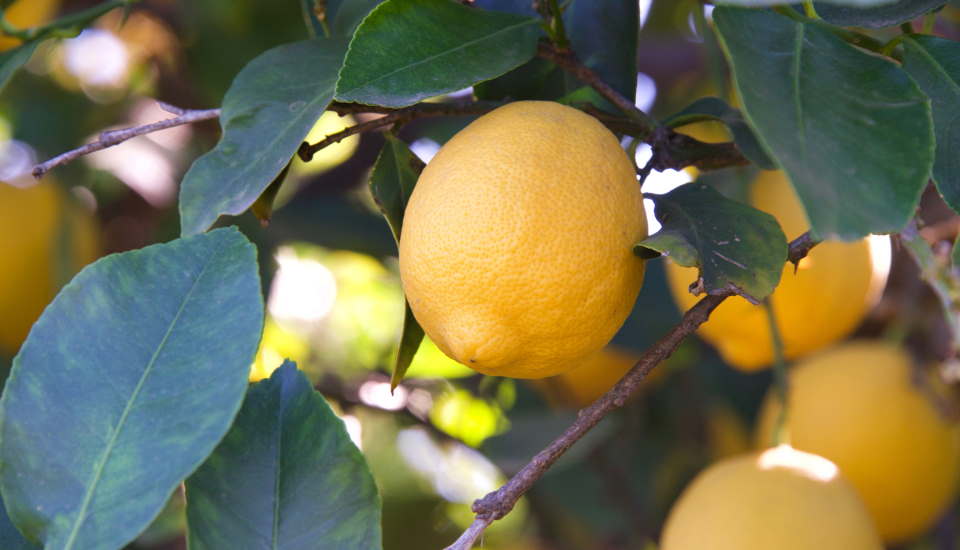
It is native to Portugal but can be grown in the western United States. The most common lemons in grocery markets are those grown on this tree. Its fruits are very similar to the fruits of Eureka both in appearance and taste.
It usually bears fruit in the winter, but a Lisbon lemon tree grown under optimum conditions can bear fruit year-round. Like Eureka, this tree is poisonous to cats and dogs, and horses should not eat its leaves.
3- Meyer
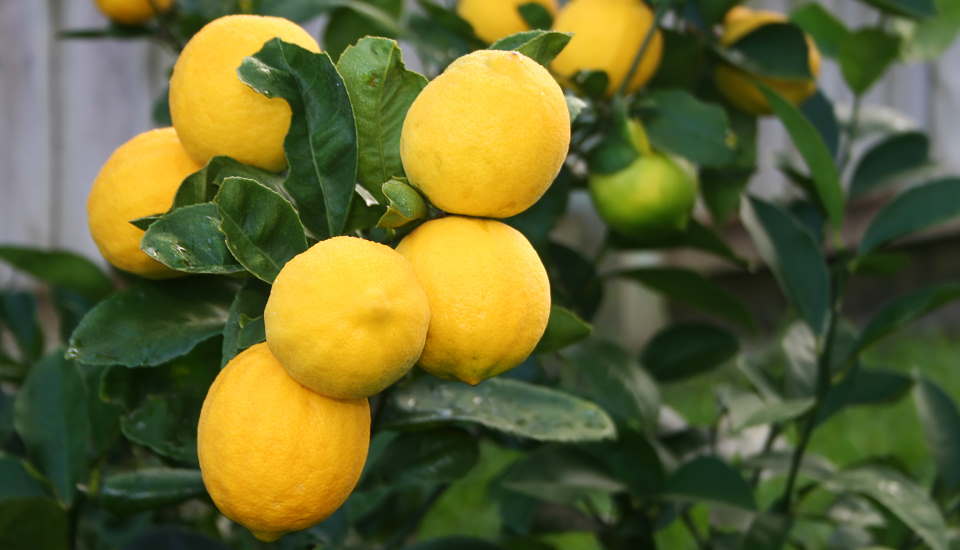
Before it was brought to America by Frank Meyer in the 19th century, it was a species that only grew in China. It is grown in its homeland not only because it bears fruit but also for its beautiful appearance.
The main difference between Eureka and Lisbon is that Meyer is much sweeter than them. It also has lighter color. It is used by many chefs in recipes and helps create delicious dishes.
4- Pink Variegated
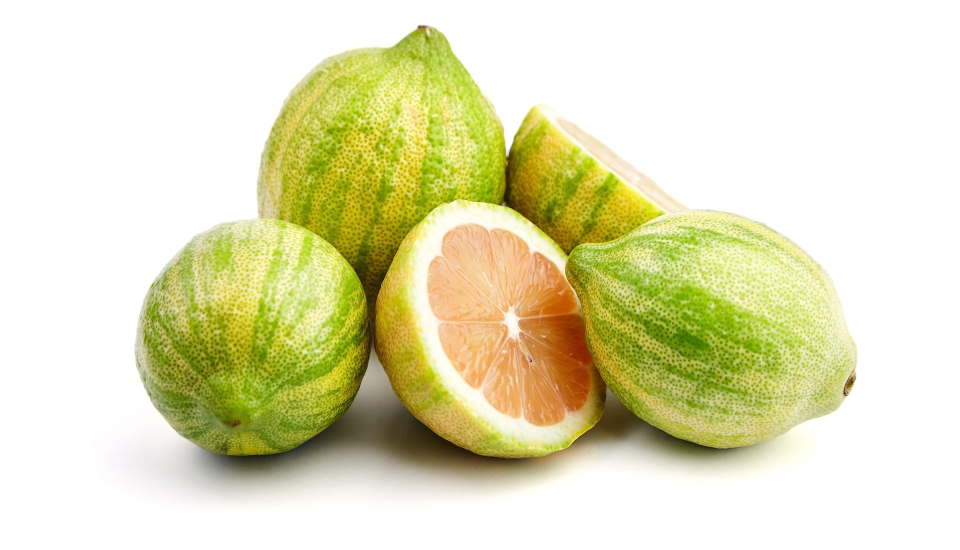
It is a subspecies of Eureka. Especially in summer, the fruits take on a bronze-pink color. We didn’t know such a tree existed 100 years ago, at least it wasn’t written in books. It was discovered in America in the first half of the century.
It grows quickly and begins to bear fruit in three years. To get delicious fruit from this tree, plant it where it can get plenty of sun and water, and let it do the rest.
5- Avalon
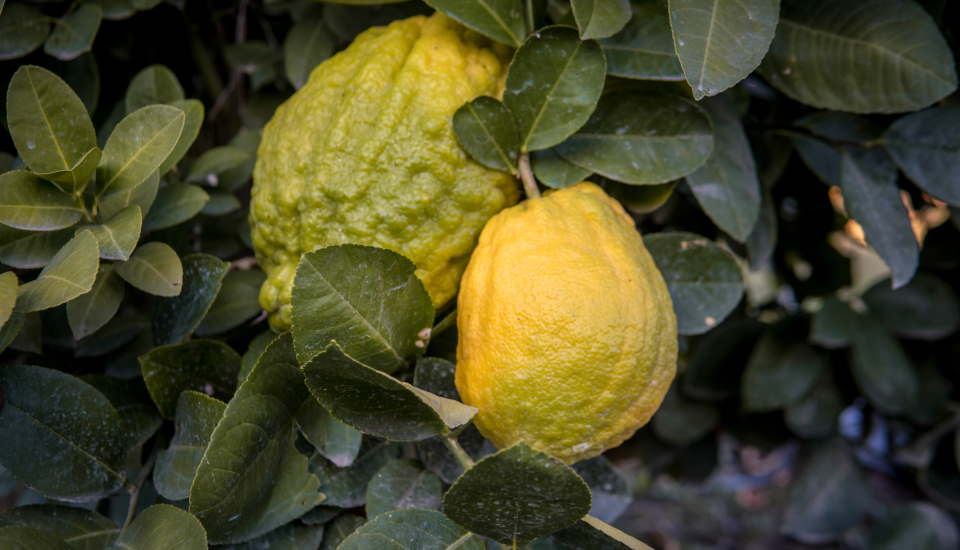
It is the type with the largest and most amorphous fruit among all species. It grows in Florida, and it is not easy to reach fruits or saplings outside this region.
These lemons are the best option if you want to make lemonade or other drinks where you need lots of lemon juice. It is one of the most juicy among all lemon trees.
6- Ponderosa
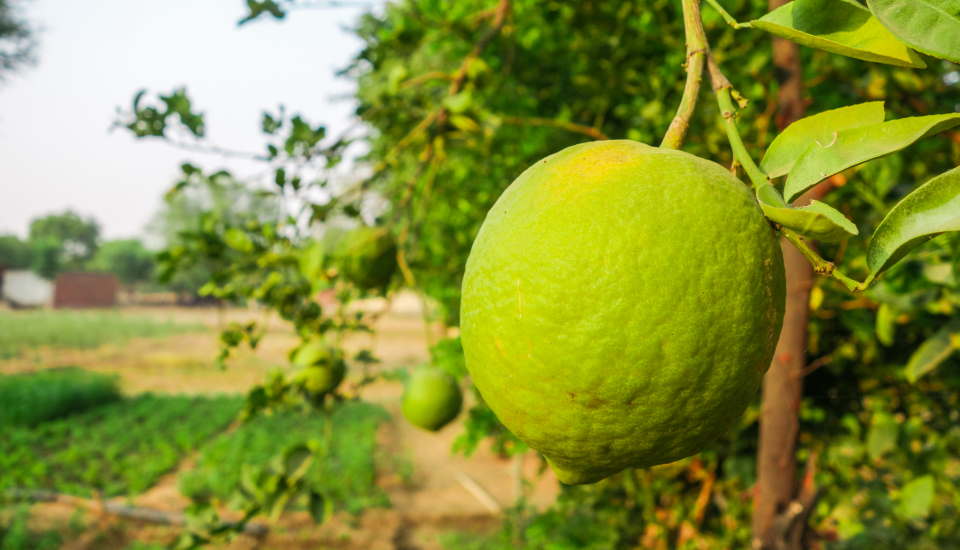
Ponderosa also has large and misshapen fruits, just like Avalon. It is the fastest-growing of all lemons and can be twice as tall as some other types. For this reason, it is important to leave a sizeable free space around them when planting these trees. As the name suggests, the flowers that will turn into fruits are pinkish.
It also has the longest maturity time among all lemon trees. It may take more than five years to bear its first fruits, but it is a very productive plant once it begins.
These were the main lemon tree types we had to mention. Many other types of lemons are specially grown in Asia and the Mediterranean. But today, we aim to give information about the species grown in America.
How to Plant a Lemon Tree

We will tell you how to plant lemon trees in general, although there may be minor variations depending on which type you want to plant. We know that many readers want to plant a potted lemon tree and grow it indoors. These plants really look very nice decoratively in homes and workplaces.
We decided to give information about how to plant a lemon tree for both environments. Still, we have to say that Lemon trees are more suitable for growing in large areas; growing them in pots reduces their potential and prevents them from producing the most fruitful results.
1- Outdoor
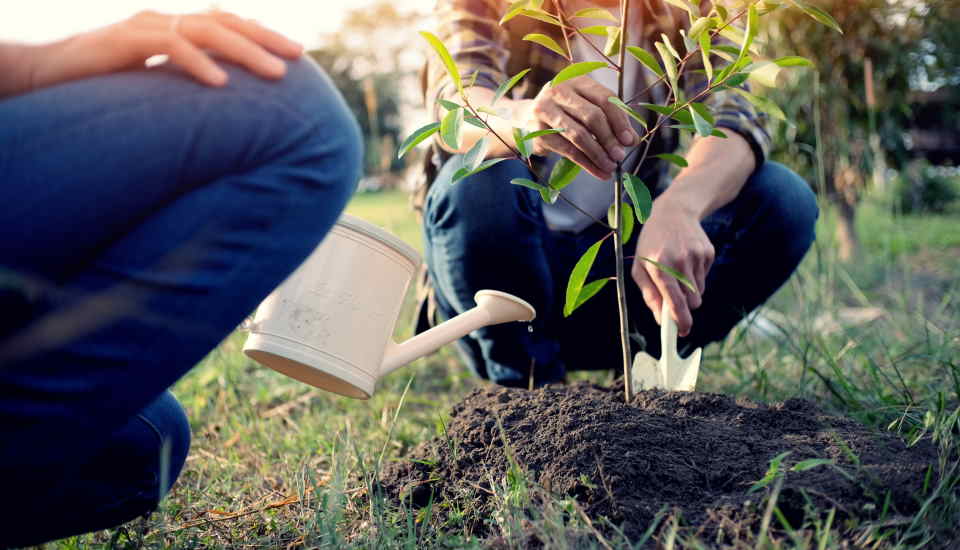
Lemon trees can often tolerate the weaknesses of both soil and climate. But if you want a large tree with lots of fruit rather than just a surviving plant (which I’m sure you do), you should choose a site with well-drained, moist soil with at least eight hours of full sun.
Like any plant that loves the full sun, lemon trees also need a lot of water, especially in summer. So make sure you plant it where you can water it easily.
You are ready to meet your sapling with soil if you have provided rich soil, full sun, and water supply. Now dig a hole slightly shallower than the root length of the sapling because we want the root ball to stay a little higher than the soil level.
In this way, we can prevent a possible rot problem. After placing the sapling in the center of the pit, you can start filling it with soil. You need to pay attention here because you start to fill your soil more tightly as you get closer to the ground level.
Water liberally after the pit is completely closed (lemon tree leaves like water, too), and then you can add some mulch around the sapling to maintain moisture. That’s it! Your tree is ready to grow and bear fruit.
2- Indoor
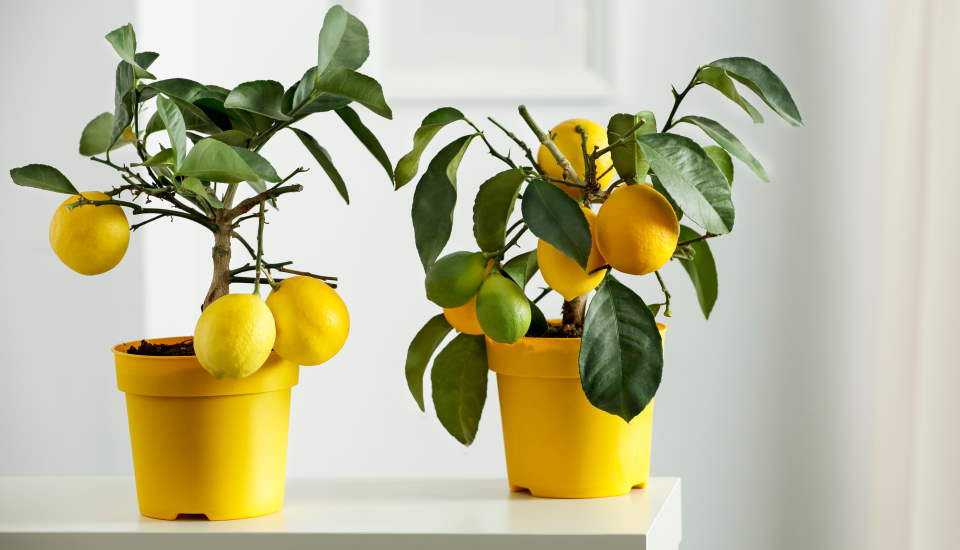
You are lucky if you want to have a lemon tree by the window. Because lemon trees are suitable plants to grow indoors, as I mentioned above, their main living spaces are outdoors, and only a small part of their potential can be realized indoors. That’s why we recommend growing them outdoors, but you can still grow this beautiful tree in your living rooms and kitchens with good care and fertilization.
First, you need to grow the tree by a window that gets full sun during the day. It likes large and spacious areas, and it will be miserable if you want to grow it in the shade. We even recommend you carry the flower pot outside on hot summer days. Because at temperatures above 70°F, it can start to suffer serious damage if grown indoors.
Generally, it is ideal for planting a young sapling in a 5-gallon pot. It can be transplanted into a larger one-gallon pot each year throughout the growing years. It is important that lemon trees can grow up to 5 feet, so they should be planted in an area with an appropriate height.
Like outdoors, you should leave the root ball a few inches above the soil and use rich, moist, well-drained soil. Especially in summer, you need to water every day. If you have decided to grow a lemon tree indoors, you should pay special attention to fertilization. We will talk about this in more detail in the next section.
How to Grow and Care for a Lemon Tree Outdoors
1- Outdoor
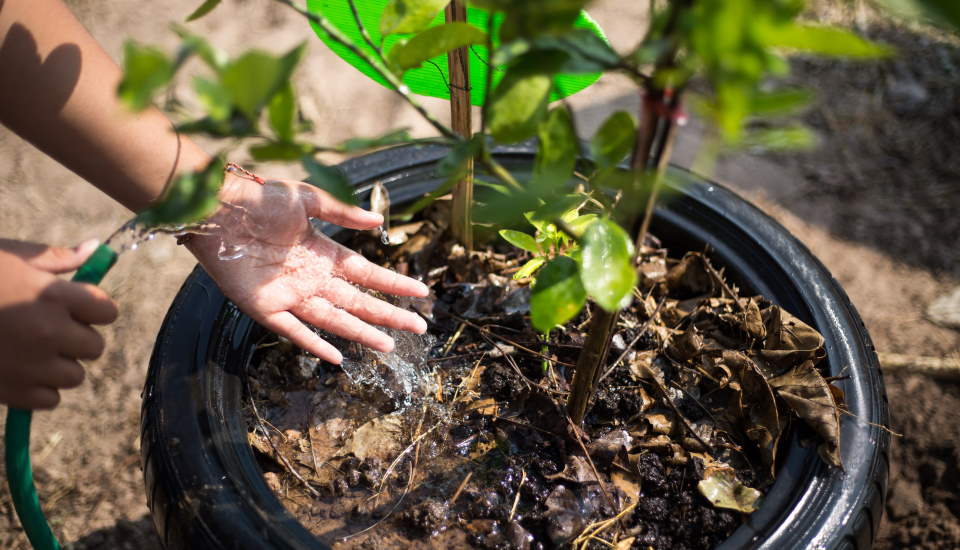
Watering
If you are growing a lemon tree outdoors, you may need to water it every other day, depending on the air temperature in the spring and summer seasons. To prevent the water from scattering around and ensure that the roots can get maximum efficiency, the trunk should be approximately 1ft. You can build an earthen dam outside. Maintaining this dam during the irrigation season will ensure you get the best results with the least water.
Pruning
Many gardeners shy away from pruning. However, the more you get involved with the plants, the more confident you will be in this process. The good news is that you don’t have to be a master pruner to prune lemon trees.
Most of the time, you don’t need to prune them, but if you notice that the branches are spread over a vast area compared to the tree’s trunk, and therefore dead branches appear, you can prune them down to the green-colored live parts of the branches.
Be sure to do this with a sterilized tool. This will minimize the chance of contracting the disease during the pruning process. Always keep the knife or shears at a slope, do not cut the tree branch straight. Never cut the live part of the branches.
Fertilizing
Lemon trees produce a large number of fruits most of the year. For this reason, they want to be well fed during the growing season. Fertilization is essential for this plant. The best time for fertilization is just after the tree gives its new leaves.
Fertilizer must be rich in hydrogen; no value above eight should be preferred. The citrus blend type is the most preferred fertilizer, but ammonium-based fertilizers can also be preferred.
Fertilize no more than three times a year, and keep some distance to prevent damage to the stem. You can use a simple formula to calculate the area to fertilize. Do not fertilize outside of a circle as far as the length of the tree. Thus, all the tree roots will be able to benefit from the fertilizer.
Finally, after fertilizing, water thoroughly into the soil. Fertilizers should not contact any area other than the tree’s root.
2- Indoor
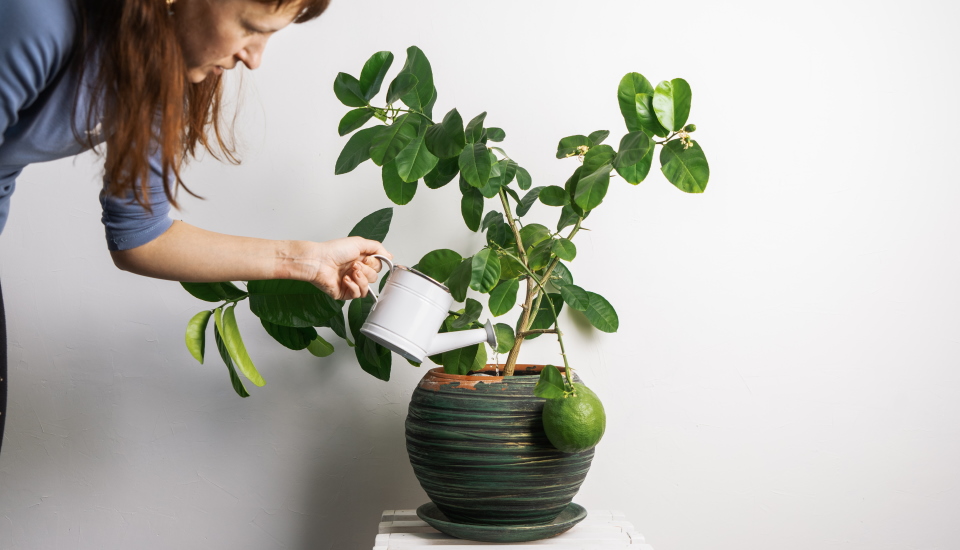
Watering
Depending on the humidity level in the environment, you may need to water the lemon trees you grow in pots daily. The important thing is that the soil must always be moist. Check the soil with your finger every day. The soil is not moist enough if your finger does not fit into the ground easily.
Also, the pot you use should have drain holes and a base. Take care of this so that the roots are not forced to absorb more water than they need.
You can decide how much you need to water according to your tree and pot size. Watering is sufficient when the pot base fills with water, but the water does not overflow.
Pruning
I’m not going to say anything too different from the outdoor growing conditions above about pruning. However, you usually don’t need to prune a lemon tree indoors.
If you notice that the tree has grown too large in proportion to its trunk and root length, you can prune it just like outdoors. But, as we said earlier, lemon trees can only realize a small part of their potential indoors. That’s why we recommend that you must not touch your tree with a knife or scissors unless you’re sure there are dead branches.
Fertilizing
Indoors, you can use fertilizers with no value above 8. As with all citrus species, be sure to choose nitrogen-rich fertilizers.
If you use a citrus mix or an ammonium-based fertilizer, apply it once a year in spring, when the tree has new leaves. You have to be very careful when fertilizing pot plants. Fertilizers should only come into contact with the soil and not touch the stem and leaves after fertilizing, water thoroughly into the soil.
Some Important Facts About Lemon Trees
The first lemon tree in America was planted in the 15th century. Interestingly, the seeds of this tree were brought to the continent by the explorer Christopher Columbus. Yes, Columbus took the seeds of many plants growing in Europe with him, and one of them was the lemon tree.
There is always a debate about whether orange or lemon has more vitamin C. In fact, there is almost no difference between the two in terms of the number of vitamins they contain. Both are vitamin C-rich fruits and contain about 53mg per 100g.
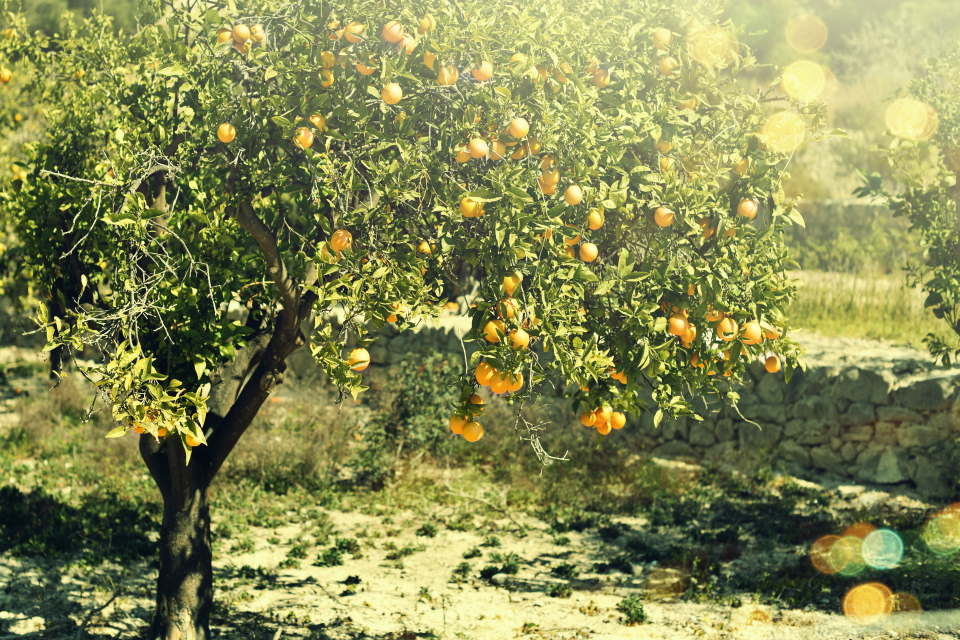
Citruses are one of the most productive fruit trees known. A well-cared lemon tree can continue to bear fruit year-round and yield up to 700 lbs of lemons.
Lemon trees live an average of 50-60 years. However, much longer-lived lemon trees can be found, and it is estimated that a tree yields an average of 300,000 lemons in its lifetime.
Do you also complain about the rapid darkening and deterioration of fruits? These miraculous fruits can also help you with this. Soak your fruits with lemon juice and keep them like that. You won’t believe the difference.
You can also use lemon juice for your hair. In the past, people used to massage their hair with a mixture of olive oil and lemon juice while doing hair care with natural methods. This simple formula can positively affect the hair health of both women and men. Also, if you want your hair to turn yellow, you can apply some lemon juice to your hair on sunny summer days.
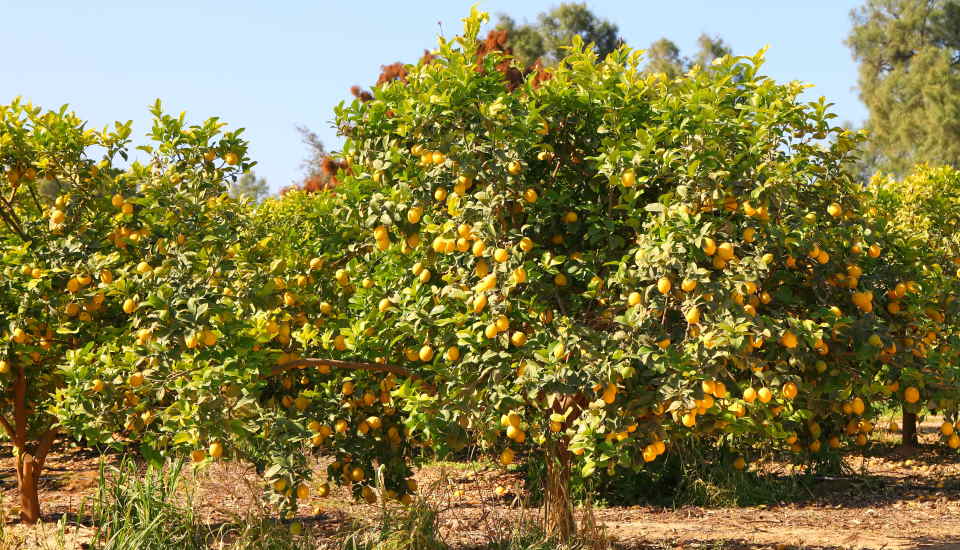
Loyal readers of our articles will remember how much we love to talk about plant-specific events. Although our topic today is lemon trees, their fruits also fall within the scope of this article. It would be unfair to pass by without mentioning the Lemon Festival, which is held annually in Menton, France. Do not miss this festival if you like lemons more than other people.
Do you remember the experiment with lemons in science class? If you remember, you already know this fact. You can light a small lamp for a short time with the energy of a few lemons.
Most of the world’s lemon production is made in the United States. In fact, we can say that 90 out of every 100 lemons are produced in the USA. What is surprising is that the lemon originated in Asia, and there are many more lemon tree species in Asia than in the Americas.
Lemons are potent antibacterials. Consuming lemon every day is very beneficial for your immune system. A few drops of lemon juice into warm water have preventive properties against many diseases.
Q&A
Lemons are used in cooking all over the world. Apart from that, we use them for various reasons in many industries. There are so many questions about them because they are so involved in life. Since our topic today is lemon trees, we will try to answer any questions about planting, growing, and care.
We know that it is not possible to answer all the questions that may come to everyone’s mind in this article. If you cannot find the answer to the question below, you can contact us or write a comment so that other gardeners can answer.
1- Can lemon trees survive winter?
It depends on how cold the winter is. Lemon trees are tropical climate plants and are not suitable for living in cold winters. If the air temperature drops below 30 degrees Fahrenheit where you live, it means frost can seriously damage the plants and lemon trees in these temperatures.
Exposing a young lemon tree to temperatures below 30 degrees Fahrenheit for several hours can lead to its death. Mature trees are slightly more durable, but it may take years for a frost-affected tree to regain its former health. If you live in an area with harsh winters, Citruses are probably not the right choice for growing, or it would be best to grow the plant indoors.
2- Which lemon tree to plant?
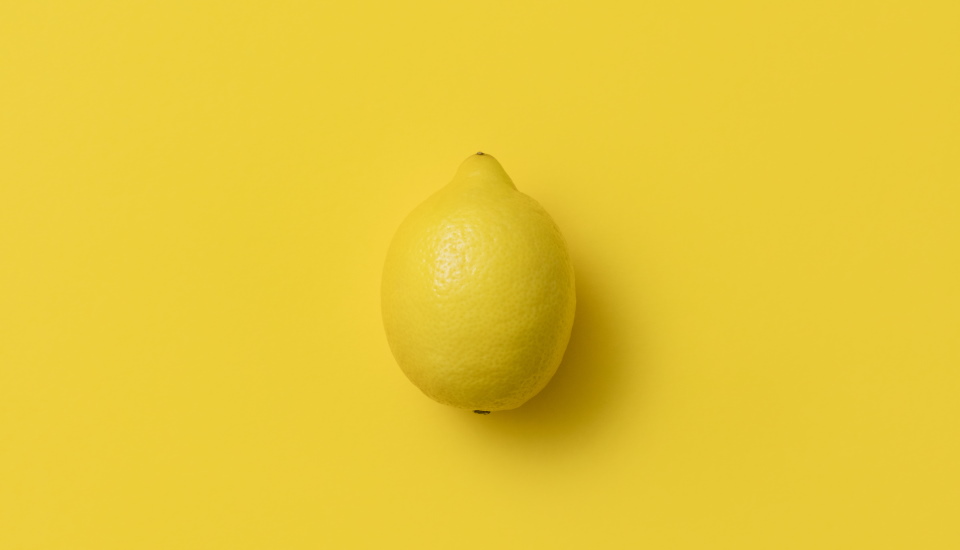
The answer to this question also depends on where you live. However, considering that many of our readers are from the USA, it is possible to say that the most prominent type is Eureka. It would be best if you chose the best-suited type to the climatic conditions of your area, and Eureka is one of the best suited to the US climate (especially in the Western states where lemon cultivation is common).
Apart from this, the cultivation of the Meyer species has increased significantly recently. As we mentioned above, this is the last Citrus species to reach America, and its fruits are quite different from other species.
3- Why do lemon tree leaves turn yellow?
There can be many reasons, but the most common is overwatering. The ideal watering amount is related to the condition of the tree and soil. If the leaves have turned yellow and you are sure it is not due to the following causes, dig small holes around the tree and inspect the roots. If the roots’ color is not close to white, it means that the tree has been damaged by overwatering.
Another factor that can cause yellow leaves is parasites. Lemon trees are an essential food source for many living creatures, and these creatures can cause yellowing leaves or create holes in the leaves. To indicate what would be the correct treatment in such a situation, it is necessary to know exactly which living creature is damaging the tree.
While some creatures can be neutralized only with pressurized water, some may need various chemicals. If you think that small insects or lice have damaged your tree, we recommend that you do not start the treatment without consulting a specialist.
Lastly, lemon trees need a lot of nutrition support, especially nitrogen. The yellowing of leaves can be caused by one or more of these deficiencies. If you suspect this, you can do a soil test, go to the agricultural market with the results, and get the right fertilizer and nutritional supplements.
4- Why is the lemon tree not fruiting?
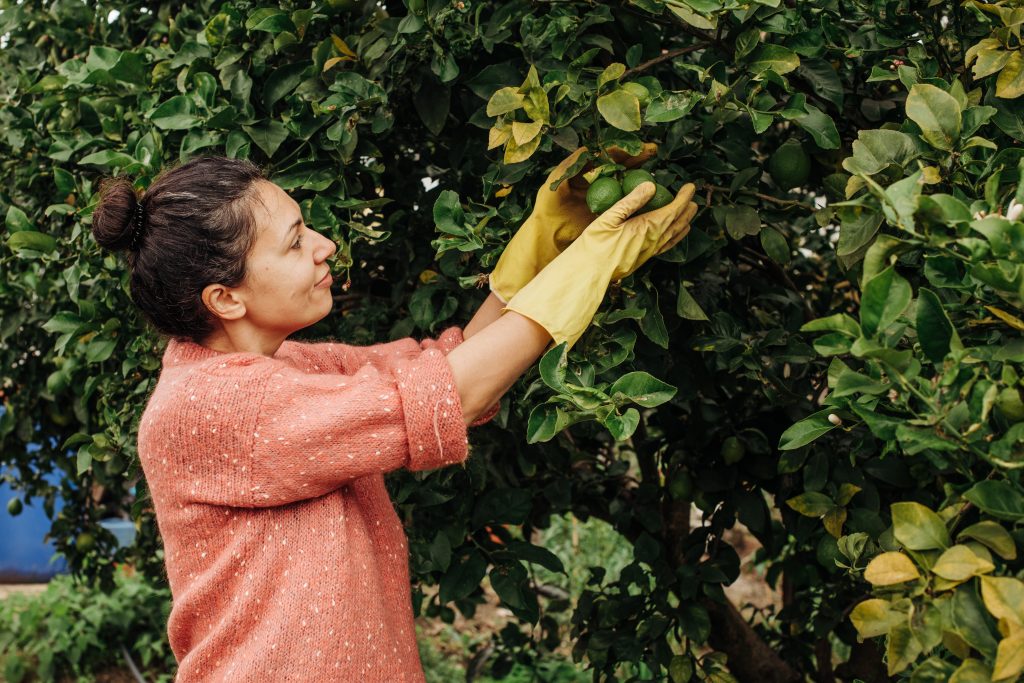
Another question with many different answers. We all plant and grow our trees, dreaming that they will fruit every day. We are naturally disappointed when they do not bloom and fruit. But just like with the problem of leaves turning yellow, there are some definite reasons for this, and when these causes are removed, your trees will begin to bear fruit.
First, of course, I will talk about watering. Overwatering can cause yellowing of the leaves, and insufficient watering is one of the most important reasons for not fruiting.
Incorrect fertilizer or excessive fertilizer use can cause the tree not to bear fruit. We gave detailed information above about how the correct fertilization process should be done. If you still have questions, send us a message, send your question to us and all other gardeners in the comments, or consult an expert.
5- Why are lemon trees dropping leaves?
As with the answers above, the main issue here is watering. As we have said before, lemon trees should be watered abundantly, especially in spring and summer. But they can also give many reactions when they are over-watered. One of them is dropping leaves. So if your tree is losing leaves abnormally, it’s probably due to over-watering.
6- Do lemon trees have thorns?
Actually yes. Lemon trees, like many other plants, have evolved with their spines. Thanks to these spines, they are protected from many dangers in nature, especially from predators.
If you’ve ever seen a thornless lemon tree, it’s possible. Humans have developed thornless hybrids over time. The most important reason for this is that the tree’s thorns damage the machines used by commercial growers.
Conclusion

We have one of the most common fruits thanks to these beautiful trees. I can’t imagine what it would be like if there were no such thing as a lemon. But I’m sure life would be much tasteless than now.
This article tried to include all the essential information that a gardener should learn about lemon trees that add taste to our lives. We have tried to create a comprehensive guide that covers everything from which sapling is right for you to the problems that an adult lemon tree can experience.
We hope this article will be helpful to all plant lovers and gardeners. If you still have unanswered questions about lemon trees, please feel free to leave a comment or contact us.
You may also be interested in:
Why Is My Snake Plant Dying? Simple Solutions

